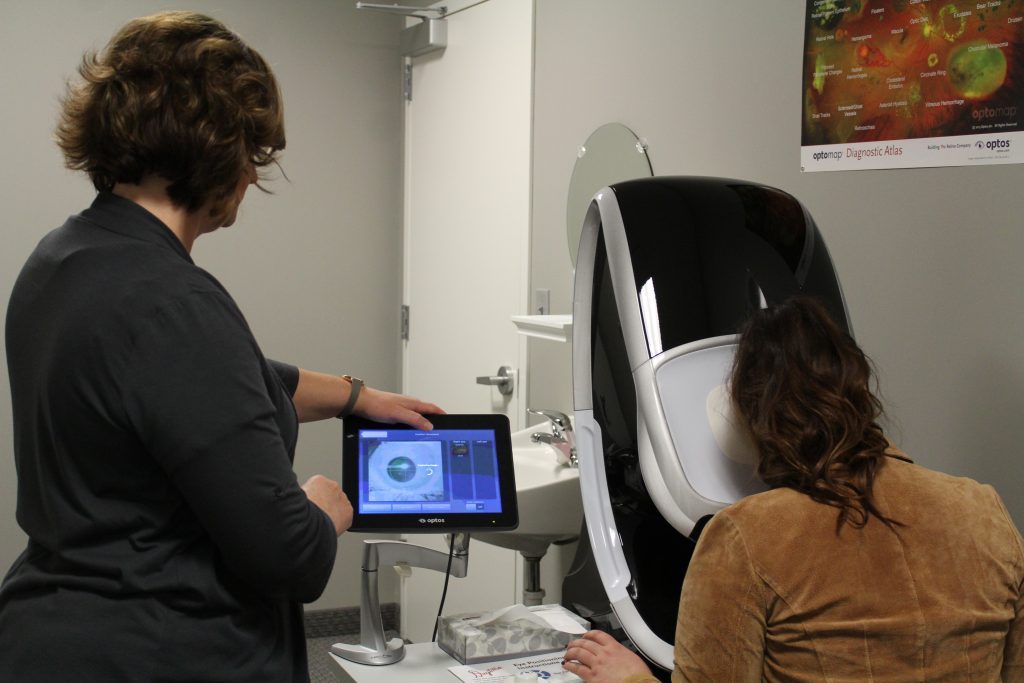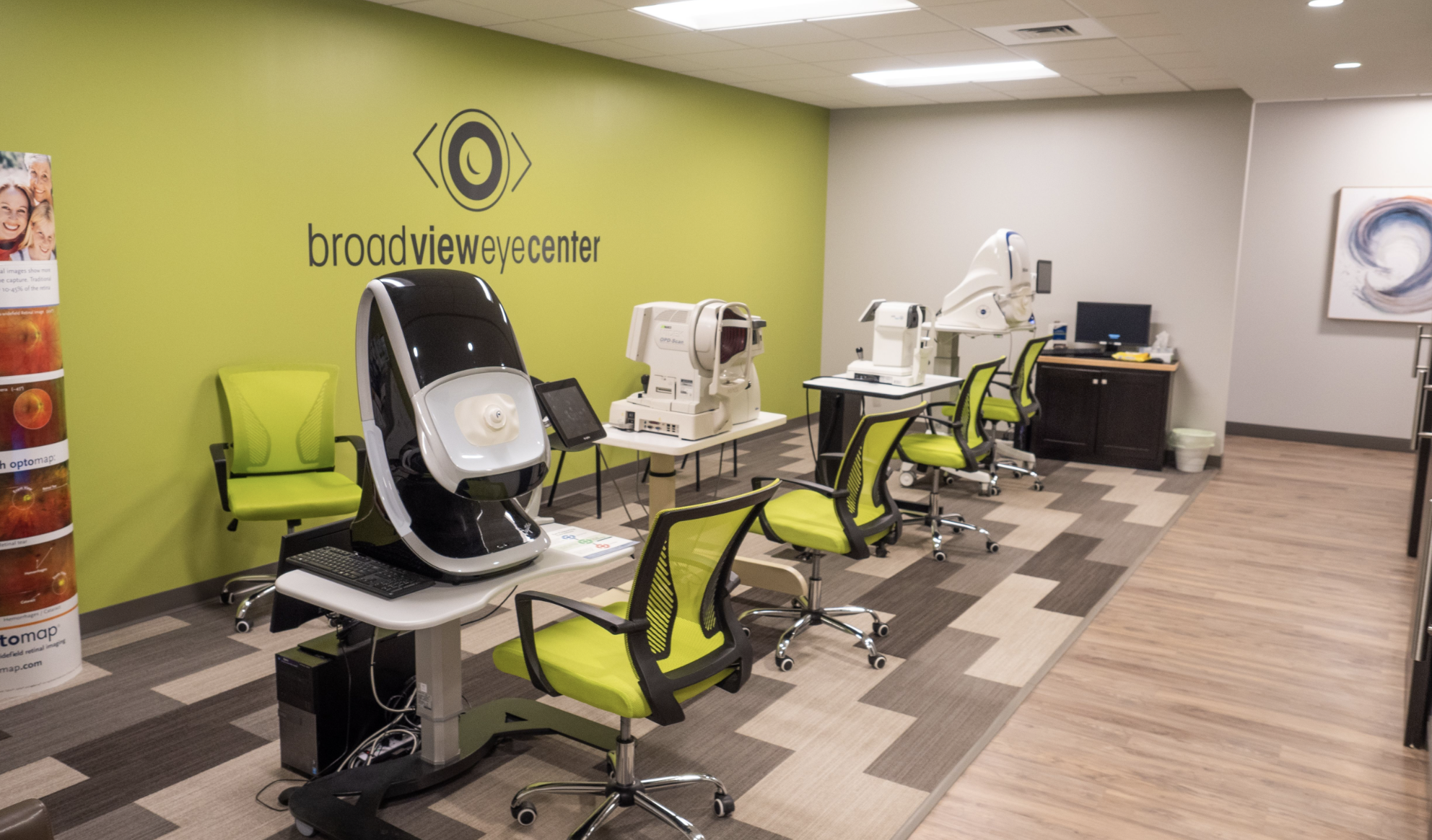
What is Optomap?
To use an Optomap, the patient simply looks through the small hole on the machine like they are looking through a keyhole and the machine does the rest without making any physical contact with the user’s eye— making it safe for the whole family to use. The Optomap is then able to generate a 3D photo of the back of the patient’s eye for the doctor to examine.
But what can the Optomap detect?

Age-Related Macular Degeneration (AMD)
This condition usually affects people that are over the age of 50. As we age, the macula in our eye can slowly degenerate and reduce our central vision which can cause blindness if not treated.
Diabetic Retinopathy
One of the most shocking things about diabetes is that most people don’t know that they have the disease; this machine can help identify it. The Optomap can identify diabetic retinopathy which is the leading cause of blindness in diabetics.
Glaucoma
Glaucoma often develops in patients without showing any symptoms. The Optomap can help catch this sneaky disease early on so that the severity of vision loss can be reduced.
Hypertension
Ocular Hypertension generally refers to the buildup of pressure within one’s eye.
Melanoma
While this cancer is most often found on the skin, it can also be found inside of our eyes. This is known as ocular melanoma and like any other cancer, it is best to try to catch it early on.
Retinal Detachment
Retinal Detachment can happen to anyone but is most common in people who are nearsighted, over 50, have significant eye injuries, and people with family history of retinal detachment. If not treated promptly the detachment of the retina from its normal position can cause permanent vision loss.









